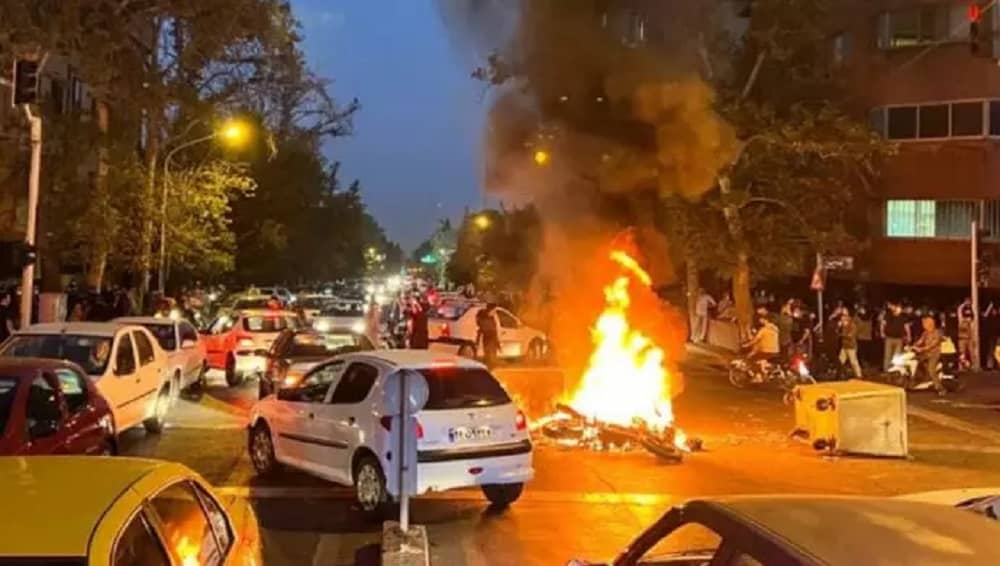
Since September 16, when news of the tragic death of a 22-year-old girl in Tehran spread, the world has learned about the restive country once more. Mahsa was a victim of Tehran’s brutal morality police. She belonged to the Kurdish ethnic minority in the north-western Iranian town of Saqqez. Her name made global headlines, with over 8 million social media posts, and sparked a new wave of protests across the country.
On September 13, Mahsa was arrested and beaten by the regime’s morality police under the guise of “improper veiling.” She was in a coma for three days before passing away on September 16.
According to the regime’s Supreme National Defense University, “three out of every four Iranians participate in protests.” Following an examination of the most recent major uprisings in 2018 and November 2019, it was concluded that “with the continuation of the economic crisis and a sharp increase in the feeling of injustice and inequality in society, if uprisings occur again, nearly 75% of people will participate in the protests.”

People are now going one step further and demanding the regime’s overthrow. They no longer accept fabricated reforms. These protests are not the same as those in November 2019, these are voicing calls directly for a regime change and are well-structured and organized thanks to the Iranian opposition, People’s Mojahedin of Iran (PMOI/MEK).
November 2019, which began after the Iranian regime announced a sudden increase in fuel prices and quickly spread to more than 190 cities across all 31 provinces. When the regime finally put down the uprising almost a week later, more than 1,500 protesters had been killed, 12,000 more had been arrested, and the clerical dictatorship’s stability had been severely weakened.
Until now, more than170 cities in all 31 provinces of the country have taken to the streets to protest the regime’s brutality and to overthrow the mullahs. Over 400 people have been killed by the regime’s security forces, and at least 20,000 people have been arrested across the country, with many of their fates unknown. Their families have gathered in front of the regime’s prisons numerous times to demand the release of their loved ones, but the regime has always responded violently.
The students then joined the strike across the country. According to reports, the regime’s forces used violence to quell the students’ protests. Youths and women took the initiative throughout the day on Saturday, with hit-and-run clashes and small protests erupting in many parts of each city, leaving the regime’s authorities unable to cope with the scale of the protests.

Protests have resumed at night in various parts of Tehran and protesters have been seen rallying and chanting anti-regime slogans in a number of districts. Protests were also reported in Saqqez, where people continued to demonstrate despite the regime’s heavy security measures.
The current uprising is also not the Iranian people’s first or last attempt to destabilize the regime. However, the reaction of society to Mahsa Amini’s murder demonstrated that the nation’s rage against the entire ruling establishment is far more profound than a fleeting emotional act, it’s a four-decade-long frustration.
 MEK Iran (follow us on Twitter and Facebook), Maryam Rajavi’s on her site, Twitter & Facebook, NCRI (Twitter & Facebook), and People’s Mojahedin Organization of Iran – MEK IRAN – YouTub
MEK Iran (follow us on Twitter and Facebook), Maryam Rajavi’s on her site, Twitter & Facebook, NCRI (Twitter & Facebook), and People’s Mojahedin Organization of Iran – MEK IRAN – YouTub







